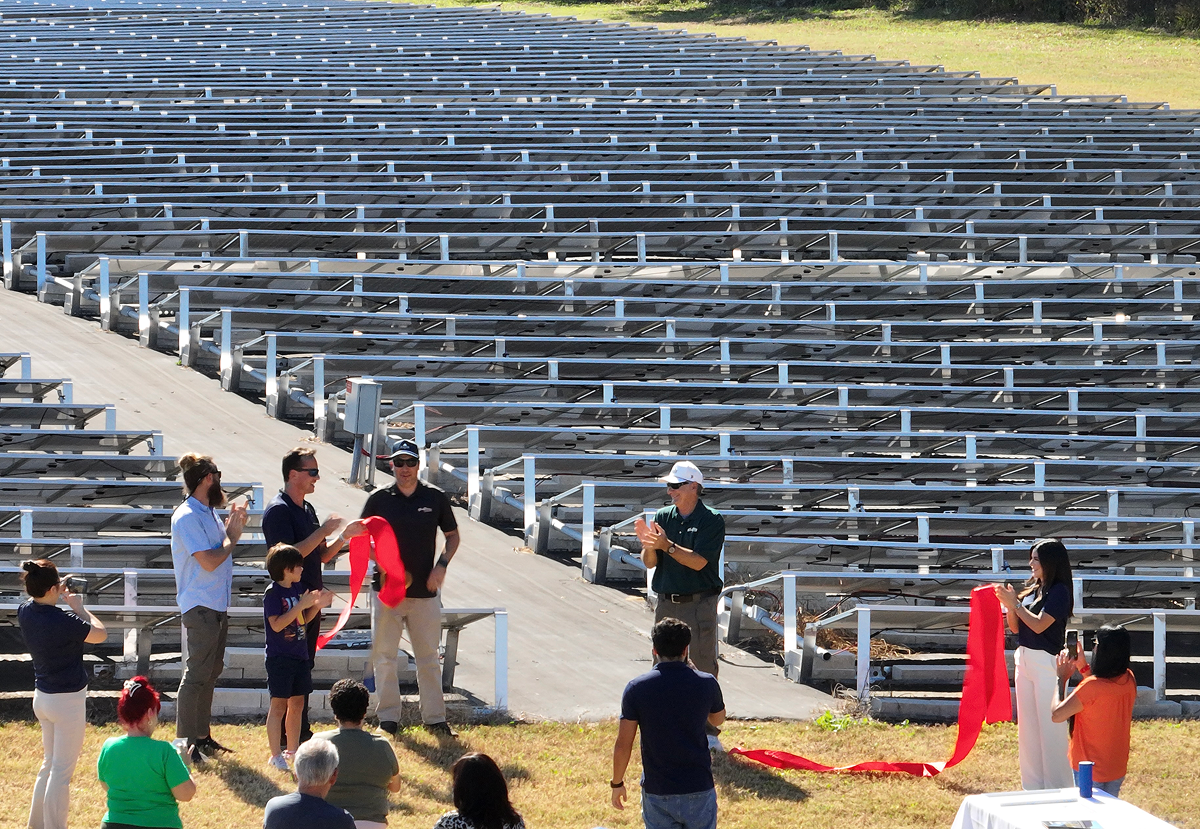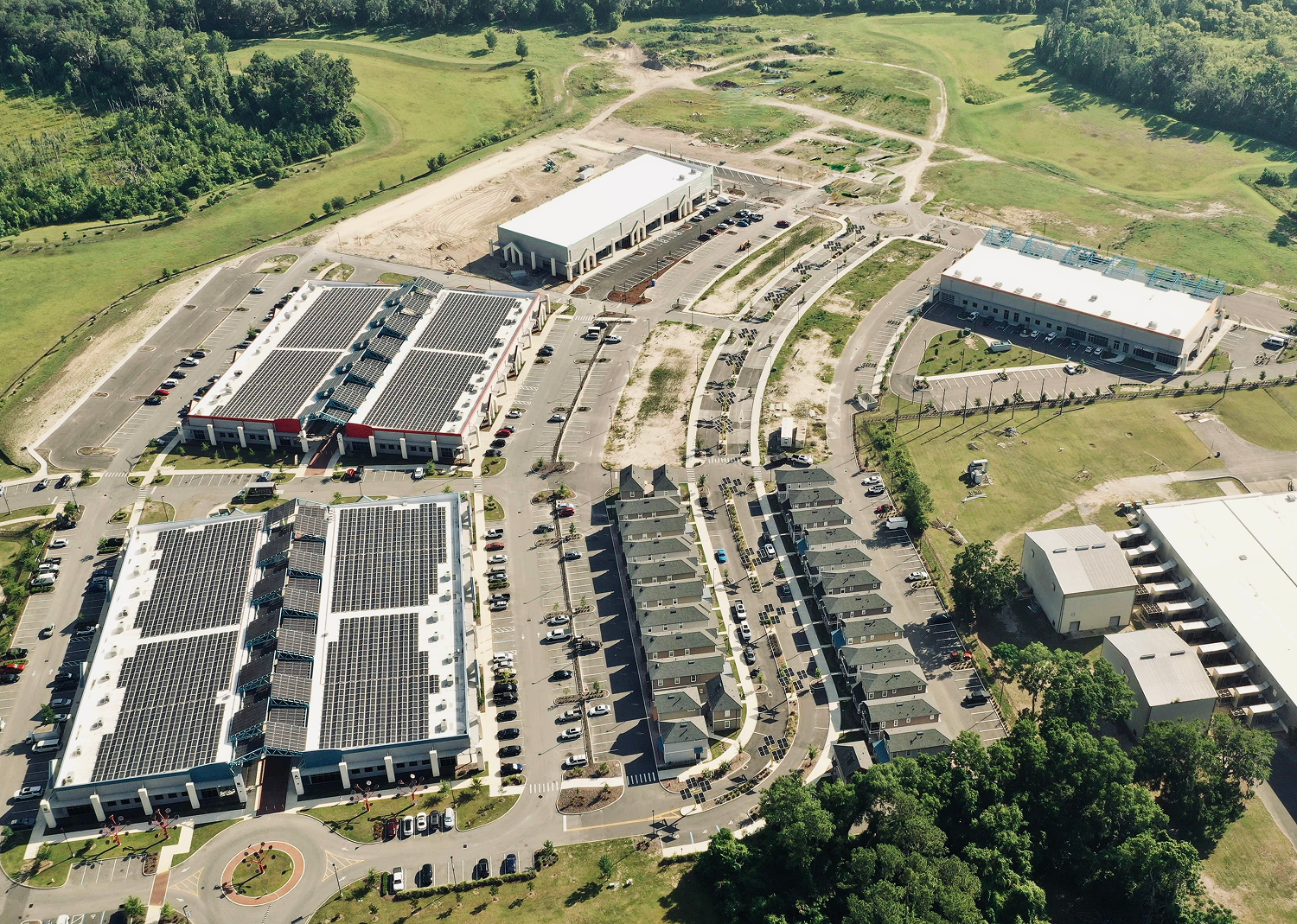The Investment Tax Credit (ITC) has been one of the most powerful financial tools for accelerating commercial solar and renewable energy development in the United States. For years, eligible businesses have been able to claim a 30% federal tax credit on qualified solar investments—including both commercial rooftop solar and ground-mounted systems—dramatically reducing upfront costs and improving project ROI.
Under the previous rules established by the Inflation Reduction Act (IRA), that 30% credit was guaranteed through at least 2032, with additional +10% adders available for projects that met domestic content standards or were built in energy communities.
That stable long-term incentive allowed developers, property owners, and corporate sustainability leaders to plan multi-year renewable strategies with confidence.
But that’s now changed.
On July 4, 2025, the newly enacted One Big Beautiful Bill (OBBB) rewrote the timeline—and the terms—of federal clean energy incentives. While the 30% commercial ITC is still technically available, it now comes with stricter rules, shorter windows, and compliance risks that could leave late movers without any federal credit at all.
In this guide, we’ll break down:
- How the OBBB changes the Investment Tax Credit for commercial solar projects
- The new eligibility rules and deadlines you must meet to secure your 30% savings
- What’s at stake for companies that wait—and how to act fast while the credit is still on the table
This article does not provide financial, tax, or legal advice. Please consult your CPA or financial advisor to understand how solar incentives may apply to your specific situation.
The New Rules for Commercial Solar ITC: What Businesses Must Know
The One Big Beautiful Bill (OBBB) has introduced significant changes to the solar Investment Tax Credit (ITC) structure for businesses. While the 30% credit is still available, access to it is now governed by stricter timelines and compliance conditions.
To qualify, commercial solar projects must now adhere to one of two key pathways defined by the IRS under safe harbor solar ITC provisions:
| Qualification Method | Project Started | Completion Deadline | Result |
|---|---|---|---|
| Start Construction Quickly/Safe Harbor | Before July 4 2026 | 4 Years (2029 or 2030) | ✅ Eligible for 30% ITC |
| Safe Harbor (Method TBD) | After July 4 2026 | Dec 31, 2027 | ✅ Eligible for 30% ITC |
| Neither met | After July 4 2026 | After Dec 31, 2027 | ❌ No ITC |
How to Use Safe Harbor to Qualify for the 30% Commercial Solar Tax Credit
New Safe Harbor and Construction Rules
Treasury’s August 2025 guidance narrows how commercial solar projects can qualify as “having begun construction” before the July 4, 2026 deadline.
- Projects larger than 1.5 MW must now satisfy the Physical Work of a Significant Nature Test. Simply spending 5% of project costs is no longer sufficient for these systems. Work may include off-site manufacturing (e.g., transformers, inverters) or on-site activity such as grading, foundations, or racking installation. The work must be under a binding contract.
- Smaller projects (≤1.5 MW) may still rely on the 5% cost-incurred rule, but systems owned by the same taxpayer, sharing interconnection, and placed in service in the same year must aggregate output to stay under the 1.5 MW threshold.
- Continuity Requirement: Once construction starts, developers must either:
- Place the project in service within four years of the end of the year construction began (e.g., 2025 projects must finish by 2029), or
- Maintain continuous physical work of a significant nature throughout the development cycle.
Failure to meet either rule risks disqualification from the 30% ITC.
Service Deadline
Projects that start after July 4, 2026, but are not in service by December 31, 2027, will not qualify for any ITC.
Which Commercial Solar Projects Qualify for the Federal Tax Credit in 2025?
Eligible commercial projects include:
- Commercial solar installations (rooftop, ground-mount, carports)
- Battery storage systems (≥ 3 kWh capacity)
- Interconnection, permitting, and installation costs
Bonus incentives (up to +10%) remain available for meeting domestic content and energy community criteria, although they are subject to new sourcing compliance, which we’ll address next.
Projects that fail to meet these updated solar tax credit deadlines will not qualify for any federal solar incentive, not even the former 10% baseline.
Who Qualifies for the 30% Commercial Solar Tax Credit in 2025–2026?
The 2025 federal policy shift doesn’t just affect timelines—it directly impacts the financial foundation of every planned commercial solar panel installation.
Here’s who needs to prioritize action immediately:
- Commercial property owners (retail, office parks, mixed-use buildings)
- Manufacturing and logistics facilities with high energy consumption
- Corporate sustainability and ESG teams planning carbon reduction pathways
- Solar developers and EPCs with 2026–2028 construction timelines
- Schools, hospitals, nonprofits, and public entities exploring clean energy (direct pay still applies)
If your system is planned beyond early 2026, you’ll need to lock in construction or meet safe harbor requirements in the next 12 months to maintain eligibility for the 30% credit.
Are Commercial Energy Storage Systems Still Eligible for the Solar Tax Credit?
Standalone battery energy storage systems are now fully eligible under Section 48E—but they are subject to the same deadlines and FEOC sourcing rules as solar. That means storage-only or hybrid systems must either begin construction by July 4, 2026 or be in service by December 31, 2027 to qualify for the 30% credit.
Bonus Depreciation for Commercial Solar: What Changed After the 2025 Tax Bill
The depreciation landscape for commercial solar systems has undergone a meaningful shift. While the 100% bonus depreciation remains intact—allowing businesses to fully deduct qualifying solar and energy storage assets in the first year—the long-standing 5-year MACRS (Modified Accelerated Cost Recovery System) classification has been removed for new projects. This means businesses no longer have the option to spread deductions over multiple years using MACRS specifically for solar property.
For commercial building owners and manufacturers, this change impacts how solar investments are reflected on the balance sheet and integrated into long-term tax planning. The full-expensing model of bonus depreciation can offer powerful short-term savings, but it compresses the benefit into a single tax year.
5-Step Checklist to Qualify for the Commercial Solar Investment Tax Credit (ITC)
Securing the full commercial solar tax credit under the revised 2025 rules is about timing, documentation, and compliance. Whether you’re a property owner, developer, or sustainability lead, these five steps will ensure your project stays eligible and fully optimized.
1. Confirm Your Project Timeline
Review your construction schedule and determine whether your system will begin before July 4, 2026 or be in service by December 31, 2027. This determines whether your project qualifies under the new IRS requirements.
2. Evaluate Your Ownership and Financing Structure
Ensure your business or development entity is not directly or indirectly affiliated with a Foreign Entity of Concern (FEOC). If you’re pursuing commercial solar financing, confirm your lender or tax equity partner also complies. FEOC-related violations can disqualify your credit eligibility entirely.
3. Secure Procurement or Break Ground to Safe Harbor *
To qualify under the IRS’s safe harbor rules, work with your commercial solar installer or developer to either:
- Incur at least 5% of total project costs (through signed contracts and deposits), or
- Begin physical work of a significant nature.*
This locks in your project’s credit eligibility even if completion happens later.*
4. File and Organize Documentation
Keep thorough records of contracts, invoices, construction milestones, and procurement timelines. Commercial solar companies should be ready to provide documentation proving compliance with IRS guidelines, particularly for safe harbor and FEOC sourcing thresholds.
5. Monitor IRS Guidance and Policy Updates
The IRS is expected to issue further clarifications on FEOC cost thresholds, documentation standards, and credit qualification methods. Coordinate with your commercial solar installer or legal advisor to stay ahead of regulatory updates that could impact your project or partners.
*(currently under evaluation by Treasury to issue new guidelines)
Today, businesses are revisiting their procurement strategies and project scopes to meet this checklist. Proactive planning—especially around commercial solar financing and supply chain compliance—can mean the difference between capturing the 30% ITC or missing it altogether.
Commercial Solar Tax Credit Rules After the One Big Beautiful Bill (OBBB)
Is my 2027 project still eligible for the commercial solar tax credit?
Yes—if it is placed in service by December 31, 2027, your project will still qualify for the 30% commercial solar tax credit, even if construction hasn’t started by July 4, 2026. However, to protect against delays, commercial solar companies are recommending safe harbor strategies to lock in eligibility well in advance.
What if I sign a power purchase agreement (PPA) in 2026?
In a PPA scenario, the system owner is responsible for their tax benefits, and as a recipient of PPA, clients commit to a specific energy rate, not ownership/tax incentives.
Can nonprofits still claim the commercial solar credit through direct pay?
Yes. Tax-exempt entities such as schools, municipalities, and nonprofits can continue to benefit from the commercial solar tax credit using the direct pay option under Section 6417. These entities receive a cash payment from the IRS equivalent to the credit amount, but they must also meet all eligibility requirements, including deadlines and FEOC solar rules
What counts as FEOC sourcing, and how do I stay compliant?
FEOC stands for Foreign Entity of Concern. Under the new law, if key equipment (like commercial solar panels, inverters, or batteries) is sourced from companies with significant ownership or influence from flagged foreign governments (e.g., China), your project may be ineligible for federal tax credits. Beginning in 2026, a minimum of 40% of your component costs must come from non-FEOC sources—rising to 60% by 2030. To remain compliant, businesses should work closely with a qualified commercial solar installer or procurement consultant to vet supply chains and maintain documentation.
Does bonus depreciation still apply for commercial solar projects?
Yes. The 100% bonus depreciation remains available, allowing your business to fully expense eligible commercial solar system costs in the first year. However, the older 5-year MACRS depreciation schedule has been eliminated for new projects. This change means a more front-loaded tax benefit, and it should be factored into commercial solar financing and ROI projections.
Can I still qualify for the domestic content bonus credit?
Yes, but it’s subject to strict sourcing standards. To receive the +10% domestic content adder on top of the base 30% credit, your project must meet non-FEOC sourcing thresholds and use a required percentage of U.S.-manufactured components. IRS guidance on safe harbor percentages is expected, but early planning with your commercial solar company is key.



